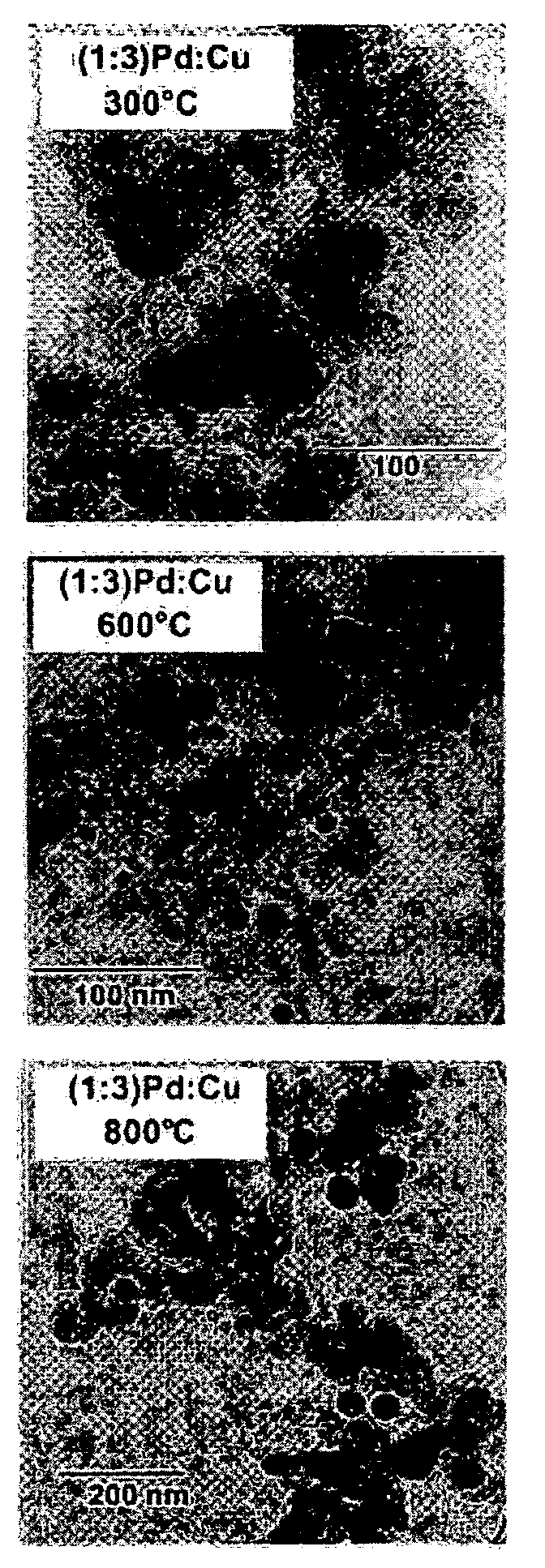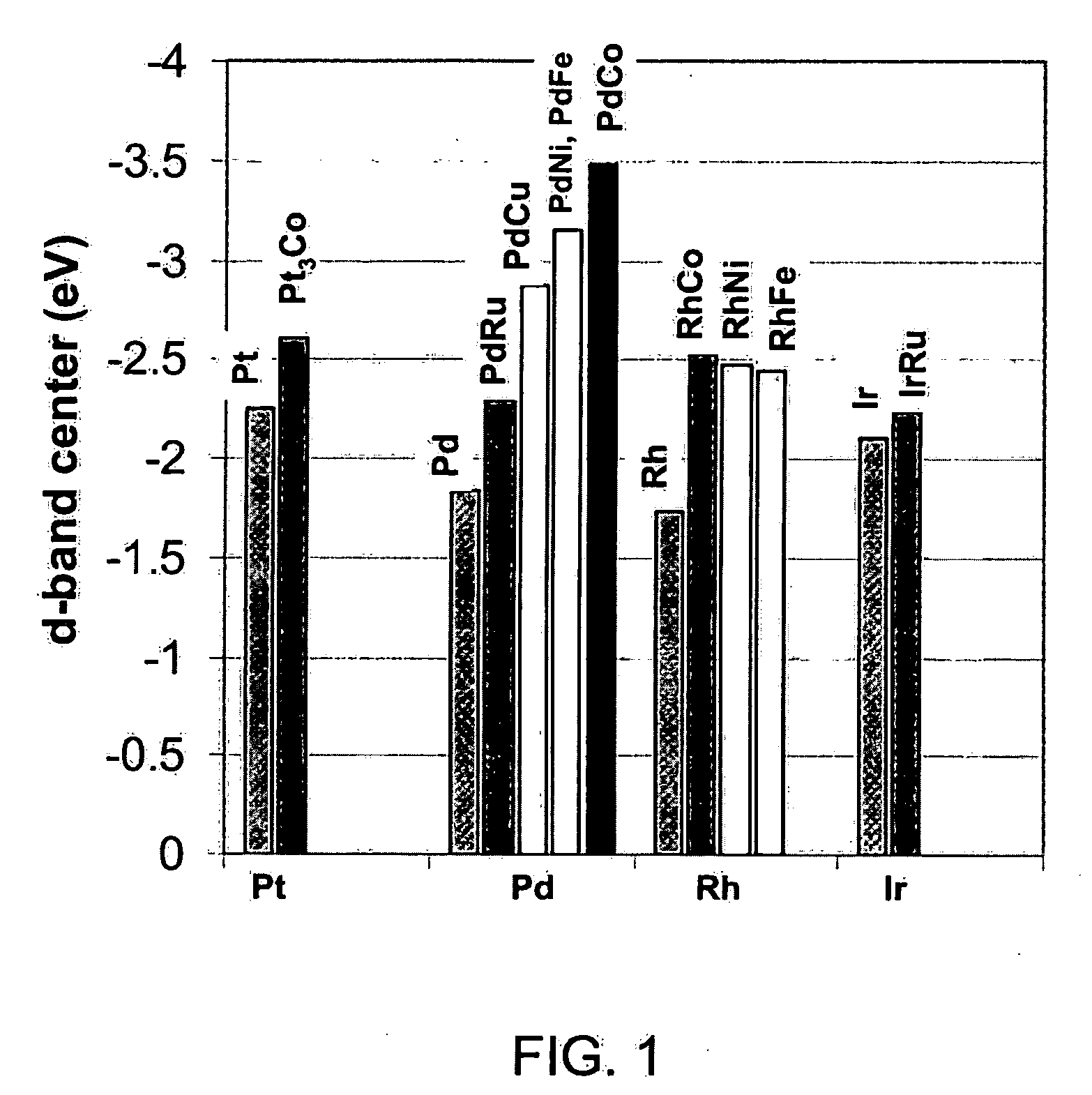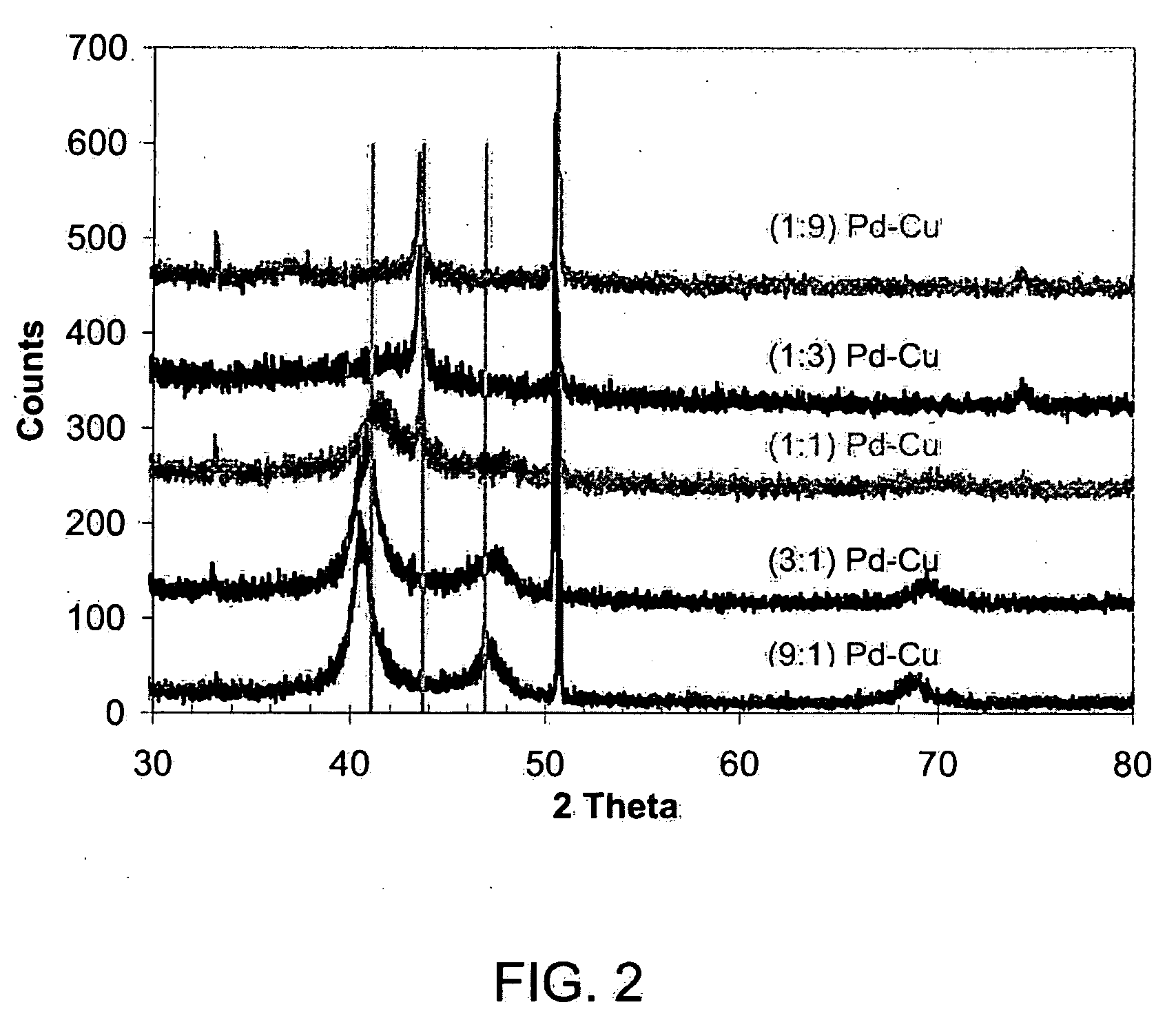Non-platinum bimetallic polymer electrolyte fuel cell catalysts
a fuel cell and polymer electrolyte technology, applied in the field of catalysts, can solve the problems of high cost, high cost, and high cost, and achieve the effect of reducing the cost of a catalys
- Summary
- Abstract
- Description
- Claims
- Application Information
AI Technical Summary
Benefits of technology
Problems solved by technology
Method used
Image
Examples
example 1
Preparation of Pd—Cu Bimetallic Electrocatalysts
[0042]Carbon supported Pd—Cu bimetallic catalysts with nominal molar ratios of Pd to Cu ranging from 9:1 to 1:9 as well as Pd alone were prepared by co-impregnation followed by reduction with hydrogen. A palladium nitrate solution (10 wt % Pd(NO3)2 in 10 wt % HNO3, Sigma-Aldrich) and copper nitrate (Cu(NO3)2.2.5H2O, Sigma-Aldrich) were used as the metal precursors. For a fixed molar ratio of a Pd—Cu bimetallic composition, a minimal amount of deionized water (Millipore, >18.2 MΩ purity) was used to dissolve the desired amount of copper nitrate, which was then mixed with the required amount of palladium nitrate solution. The solution mixture was impregnated into pre-weighed XC-72R Vulcan Carbon (Cabot). This mixture was then dried at 100° C. overnight. The final catalyst was then formed by heating the impregnated sample in dilute hydrogen in helium (3.67% H2, Linde) at three different temperatures, 300° C., 600° C., and 800° C., respect...
example 2
[0067]Starting metal precursors of Pd(OAc)2 and Cu(OAc)2 are added to 2-ethoxyethanol. The mixture is stirred in a N2 gas atmosphere, heated in the presence of conventional organic capping molecules, for example, oleylamine and oleic acid. The mixture then undergoes a reduction reaction to form a plurality of organic shell-metal nanoparticle cores substantially characterized by a base metal and a noble metal preferentially segregated to the outer surface of the particle. These particles are then dispersed on a carbon support, subjected to an O2 / N2 atmosphere at treatment temperatures of about 200-300° C. for about one to two hours and then to a H2 / He atmosphere at treatment temperatures of about 400-800° C. for about two to about six hours to activate the final end product catalyst.
[0068]In a typical procedure for the synthesis of (1:3)PdCu, for example, 0.0911 g of Cu(OAc)2 (0.5 mmol), 0.0371 g of Pd(OAc)2 (0.165 mmol), 130 mL of 2-ethoxyethanol, and 1.3 mL of oleic acid (4.09 mmol...
example 3
[0071]PdCl2 and CuCl2 are each dissolved in ethylene glycol and ammonia solution and added to form metal salt complex. The pH is then adjusted to about 12, carbon black (Vulcan XC-72R from Cabot) is added, and the is mixture stirred. The resulting mixture is heated, resulting in the reduction reaction to form metal nanoparticle cores. The product is then subjected to a H2 / He atmosphere at treatment temperatures of about 500° C. for two hours to activate the final end product catalyst.
[0072]1:3 PdCu / C catalyst has been prepared by using ammonia as a complexing agent. At first Vulcan XC-72R carbon black was pretreated with 35% HNO3 under refluxing condition to introduce surface functional groups before being suspended in ethylene glycol solution (72 mg carbon+60 mL ethylene glycol). A calculated amount of PdCl2 solution (0.3439 g) (5 wt. % in 10 wt. % HCl) was dissolved in 20 mL ethylene glycol at room temperature 2 mL of aqueous ammonia (30%, v / v) was added to PdCl2 solution and the ...
PUM
| Property | Measurement | Unit |
|---|---|---|
| temperature | aaaaa | aaaaa |
| temperature | aaaaa | aaaaa |
| temperatures | aaaaa | aaaaa |
Abstract
Description
Claims
Application Information
 Login to View More
Login to View More - R&D
- Intellectual Property
- Life Sciences
- Materials
- Tech Scout
- Unparalleled Data Quality
- Higher Quality Content
- 60% Fewer Hallucinations
Browse by: Latest US Patents, China's latest patents, Technical Efficacy Thesaurus, Application Domain, Technology Topic, Popular Technical Reports.
© 2025 PatSnap. All rights reserved.Legal|Privacy policy|Modern Slavery Act Transparency Statement|Sitemap|About US| Contact US: help@patsnap.com



